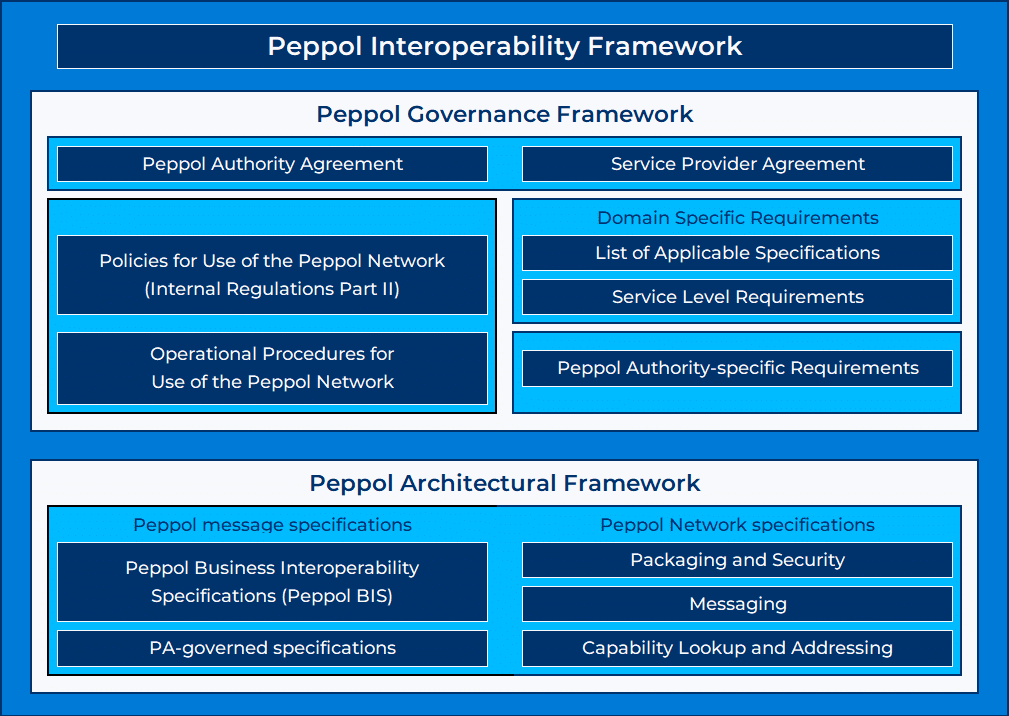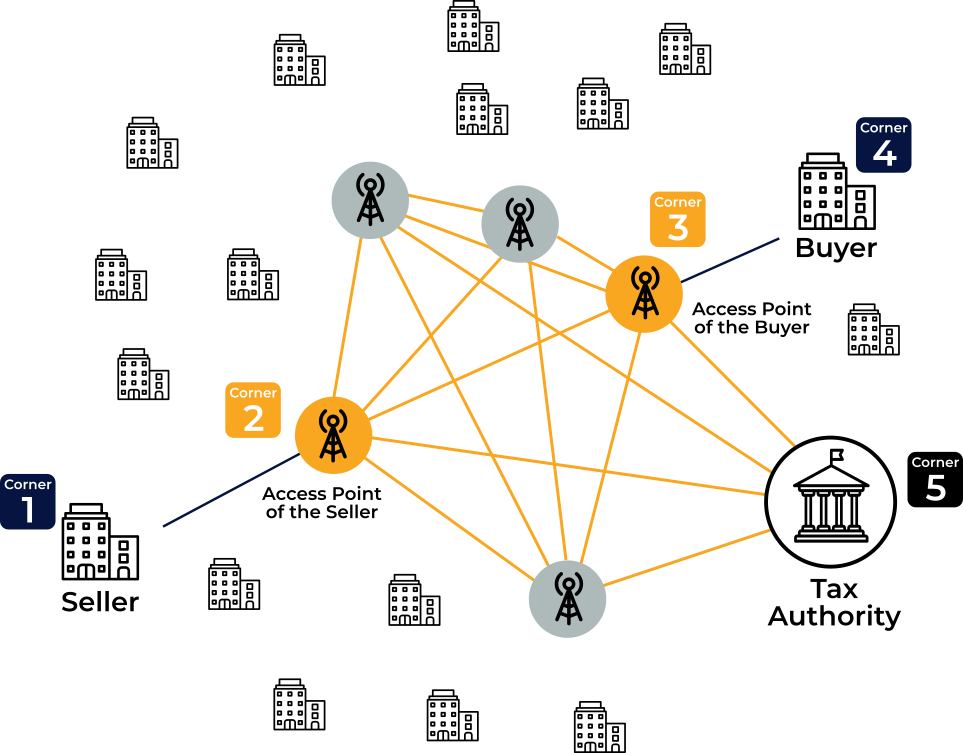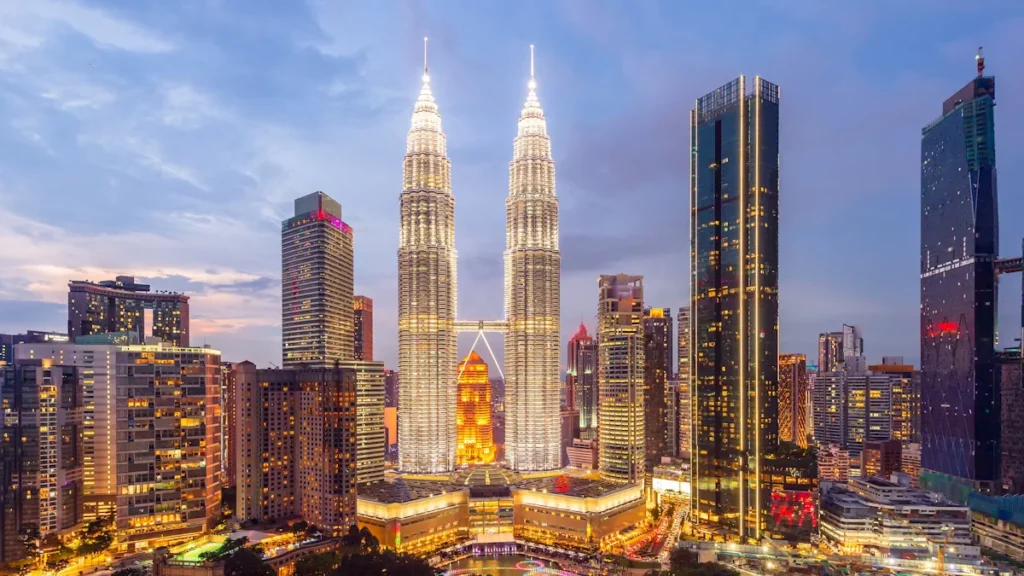Peppol Network Overview
Summary
The Peppol network establishes a global architecture and organizational ruleset for electronic business communication, making business transactions more efficient and straightforward thanks to its “Connect Once, Connect to All” principle.
Peppol complies with European standards like EN 16931 and is de-central & vendor-neutral, promoting resilience and avoiding dependency on any single vendor.
Key Features
The Peppol network offers five core features to address the complexities of national and international electronic document exchange in invoicing and electronic procurement:

Interoperability: Peppol ensures seamless communication and content interpretation between diverse systems, enabling businesses to exchange invoicing documents regardless of their service providers or technology platform they use.

Security: The “Know your Customer” principle ensures that all participants and Service Providers are known and validated.
The Peppol Transport Infrastructure ensures secure data transmission, safeguarding sensitive procurement information against unauthorized access and ensuring data integrity.

Robustness: The fully distributed network topology without single point of failure offers zero downtime on a global scale without vendor lock-in.

Standardization: Peppol’s Business Interoperability Specifications define standardized processes, content and formats for documents, ensuring consistency and eliminating the need for customization during implementation and rollout.

Global Reach: While originating from Europe, the Peppol network has expanded its reach beyond the continent. Countries worldwide have adopted Peppol standards, contributing to a truly global network for electronic procurement.
Connect Once, Connect To All
Peppol’s “Connect Once, Connect to All” principle is a key factor in its widespread success. This approach allows businesses to connect to the Peppol network each through a single access point of their choosing, enabling seamless communication with any other participant within the network, regardless of their location or service provider.
By eliminating the need for multiple integrations and reducing complexity, Peppol simplifies both national and cross-border transactions, making it easier for companies to engage in global digital commerce. This efficiency and scalability have been instrumental in driving the network’s rapid adoption and success worldwide.
A 4-Corner, Decentralized Network
In the 4-corner model, each participant selects a service provider that best meets its needs, allowing for individual customization and flexibility. The service providers are mutually responsible for ensuring that the e-invoices are transmitted correctly and securely, thus forming a standardized, interoperable network between them.
By connecting with a single Access Point, businesses gain access to the entire network (“Connect once, Connect to all”) and can exchange electronic documents—such as e-invoices and purchase orders—with any participant, regardless of their Access Point. To achieve this, the network uses simple yet powerful dynamic discovery mechanisms to enable automatic setup of Service Provider connections.
This model offers great scalability, as businesses can manage relationships with multiple trading partners through their respective service providers without needing to establish individual connections with each partner.
Network Architecture
Peppol’s technical architecture is pivotal to its success. Its 4-corner model clearly defines the roles and interactions of Buyers, Sellers and Service Providers:
- Buyers initiate transactions
- Sellers provide goods or services
- Each of them uses their own Service Provider to facilitate document exchange
- Local Peppol Authorities govern compliance
This clear delineation streamlines processes, reducing complexity in domestic and cross-border transactions.
Access Points (AP)
In the Peppol architecture, Service Providers serve in a dual role. Towards their customers, they function as Access Points. Towards all other Service Providers, they act as the nodes of the Peppol network.
They act as gateways and serve as the constituent parts of Peppol’s distributed architecture. They implement secure exchanges between trading partners by validating, routing, and delivering documents.
This decentralized approach ensures the network’s resilience, avoiding a single point of failure and enabling continuous operation even if individual Access Points experience downtime.
Service Metadata Publisher (SMP) / Locator (SML)
Together, the SMP and the SML ensure the discoverability of participants within the Peppol network. Acting as a registry, it allows entities to locate each network participant (i.e. the Buyers and the Sellers) for document exchanges, using always up-to-date communication parameters.
Tip: pause the animation below by putting your mouse or finger on the image
The SMP‘s role is assumed by Access Points that publish metadata about their clients (both buyers and sellers), including details like their Peppol identifier (Peppol ID), the types of documents they can process and the corresponding parameters.
The SML is used by the Access Point of the sender (Corner 2) to locate the SMP containing the metadata of the receiving participant of the document (Corner 4). This metadata then allows to determine the Access Point of the recipient (Corner 3) in order to route the documents.
The Peppol SML service relies on the highly redundant DNS (Domain Name Service) technology to publish the information about the SMP location of each Peppol participant anonymously, ensuring the network remains decentralized and secure.
Peppol Identifier & Peppol Directory
To continue with the WWW metaphors, while websites are identified by their URL (commonly called “website address”), Peppol participants (the buyers and the sellers) are identified by their Participant ID.
The Peppol participants identifiers are composed of two parts:
- A participant identifier scheme (4 digits), based on the EAS subset (with some extensions) of the ISO 6523 list
- A unique participant identifier (characters dependent on the identifier scheme)
- 9930:de811569869 => 9930 is the code or Germany’s VAT identifiers, and de811569869 corresponds to the Deutsche Bahn (German Railway Company)
- 0151:19241815442 => 0151 is the code for Australia’s Business Numbers, and 19241815442 corresponds to the State Insurance Regulatory Authority (SIRA)
Technically, there is another part to the Peppol Participant ID, placed before the two others, that is always identical (“iso6523-actorid-upis”), so most of the time it is not explicitly mentioned.
Multiple online directories exist for anyone to look for a specific participant’s Peppol ID and the document types it supports. The most popular one is the directory managed by OpenPeppol itself: the Peppol Directory which automatically draws its data from all SMP servers.

Invoice Format
As for other elements of the network, the Peppol invoice format corresponds to a standardized approach designed to ensure interoperability, compliance, and efficiency across different countries and systems.

With always more countries adopting the Peppol network, increasingly specific requirements emerge, and governments also often introduce new regulations. To address these evolving needs while ensuring both forward and backward compatibility, as well as maintaining seamless interoperability among all participants, OpenPeppol has developed the PINT (Peppol INTernational) format, which more easily allows the management of specialized variations.
Alignment with European Standards (EN 16931)
Peppol’s success is based on its alignment with European standards, notably the European Norm (EN) 16931. This standard establishes a common core for electronic invoicing, ensuring interoperability in format and uniformity in content.

Peppol, by leveraging EN 16931, not only fulfills European regulatory requirements but also facilitates seamless cross-border trade by providing a standardized approach to electronic invoicing. This integration reinforces Peppol’s commitment to interoperability and its role in harmonizing electronic procurement practices across diverse regulatory environments.
The PINT (Peppol INTernational) specification system is an aligned extension of the scope of the European Norm to the global scope.
Governance Model
The OpenPeppol Association has embedded all technical specifications into the governance model of the Peppol Interoperability Framework (PIF) and assumes responsibility for the ongoing development, maintenance, and promotion of the Peppol specifications as well as monitoring compliance to all processes.
It provides a governance framework that is based on transparency, inclusivity, and responsiveness to the evolving needs of its diverse user base as a member-driven organization.
The OpenPeppol organization also works with 20+ local Peppol Authorities representing the specific requirements and implementations of their respective jurisdictions all over the world.
Distributed Network and Resilience
One of Peppol’s distinguishing features is its distributed architecture, which contributes to the network’s resilience and independence from a single vendor. Unlike other centralized systems, Peppol operates on a fully distributed model where multiple Access Points execute document exchange directly with each other. Even the Service Metadata Locator (SML) – used to route documents within the network – relies on the DNS (Domain Name Service) technology, which is fully decentralized and redundant.
This decentralized approach ensures the network’s robustness, eliminating the risk of a single point of failure and offering continuity even in the face of individual Access Point outages.
The distributed nature of Peppol also ensures vendor independence. Participants in the network can choose from a variety of Access Point providers, fostering healthy competition and preventing vendor lock-in. This not only empowers businesses with the flexibility to select providers that best suit their needs but also encourages continuous innovation within the Peppol ecosystem.
5-Corner Model ("Peppol CTC")
The 5-corner model introduces an additional layer of e-reporting obligations to the traditional 4-corner model. In this framework, a government entity, typically the tax authority, acts as the 5th corner of the network and receives the tax data (as part of Continuous Transaction Controls or CTC) for all invoices passing through the system.
The 5-corner model is also called DCTCE (Decentralized CTC and Exchange), as it’s handling both the exchange of invoices between participants, and the e-reporting to the tax authority (CTC) via the Corner 5.
The Peppol network serves as the most prominent example of a 5-corner model within the context of national e-invoicing and e-reporting mandates, commonly referred to as the Peppol CTC network. Here, tax authorities assume the role of the 5th corner, receiving in real-time all CTC data.
This model is gaining increasing traction as more countries introduce e-reporting mandates, finding the 5-corner model to be a convenient and scalable solution for meeting these new requirements, and enabling companies to do the same.
The Invoicing Hub Word
A decentralized, robust and independent model, built for scalability.
The Peppol network provides a robust, complete and proven model for the next generation of business document exchange. It has been adopted beyond the original European scope because of its simple, yet comprehensive and practical concepts.
The potential of Peppol lies in its truly distributed operation and organization:
- The network is composed of independently operated, owned and developed access points
- The member-based internal structure guarantees continued evolution without sacrificing stability
- The international structure enables both global coverage as well as local adaptation
In the B2B context, the Peppol network is ready for use but not widely adopted yet. Following the success in the B2G sector, upcoming invoicing regulations will likely force the issue.
Additional Resources
Association ensuring the governance of the Peppol network
Entire set of official Peppol BIS 3.0 specifications
Official directory of worldwide Peppol-ready businesses
Peppol Architectural & Governance Frameworks
Full OpenPeppol members list
Get your Project Implemented
Gold Sponsor
Powered by the world’s most sophisticated invoice-centric AI – trained on over 2 billion invoices – Basware's Intelligent Automation drives ROI by transforming finance operations. We serve 6,500+ customers globally and are trusted by industry leaders including DHL, Heineken and Sony. Fueled by 40 years of specialized expertise with $10+ trillion in total spend handled, we are pioneering the next era of finance.
With Basware, now it all just happens.
Latest News
New exemption threshold and grace period for Malaysian small enterprises
Mandatory e-invoicing takes effect in Belgium
Latest provisions and technical challenges for the imminent Belgium mandate
Keeping Up with the Mandates: A Practical Guide to E-Invoicing Compliance
E-invoicing in Croatia from January 1, 2026: The Complete Guide
📩 Newsletter
Receive the latest e-invoicing news, directly in your mailbox, once a month.


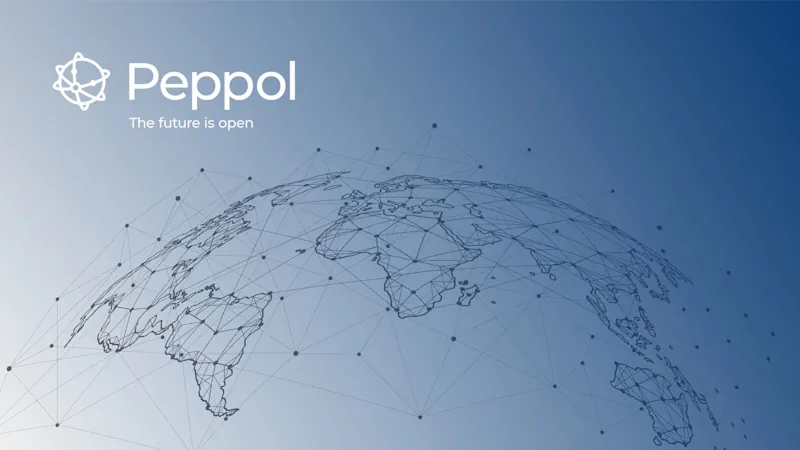
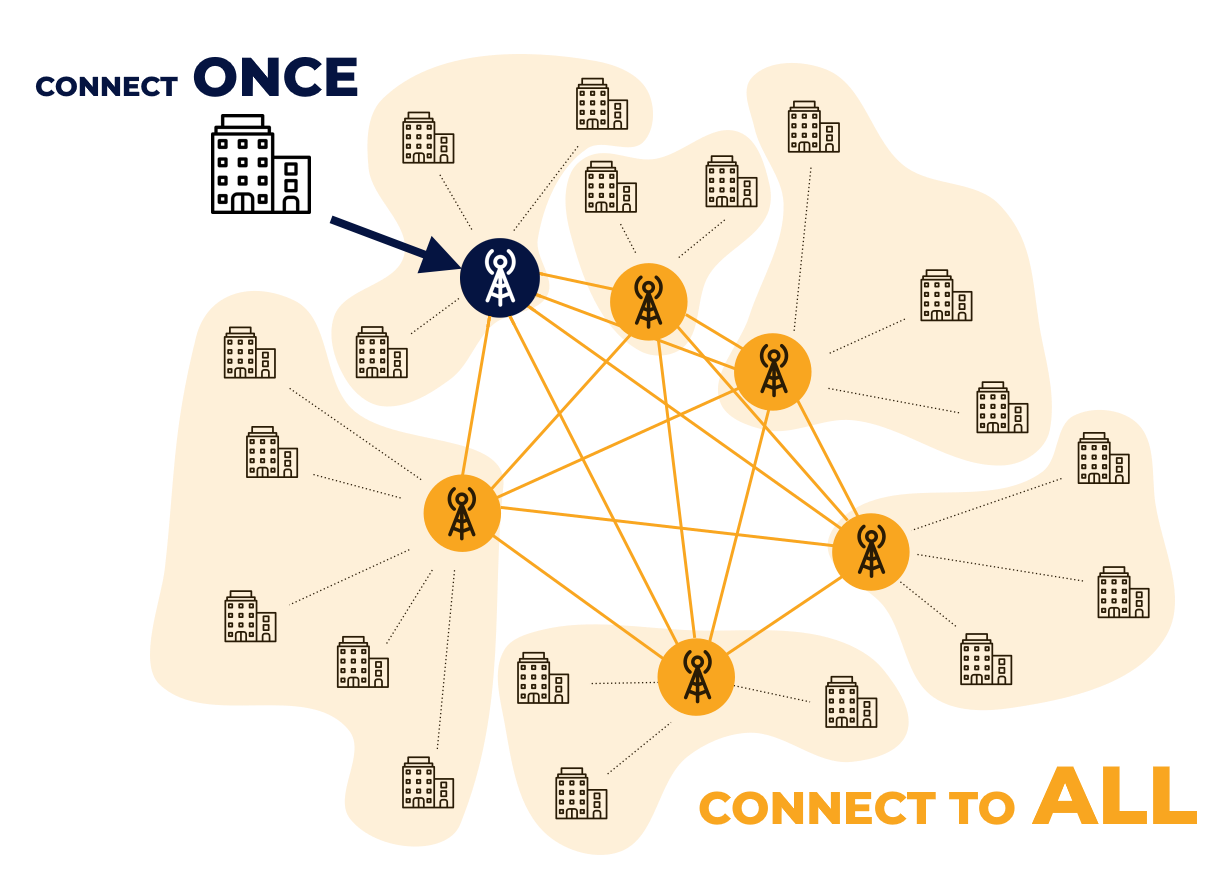


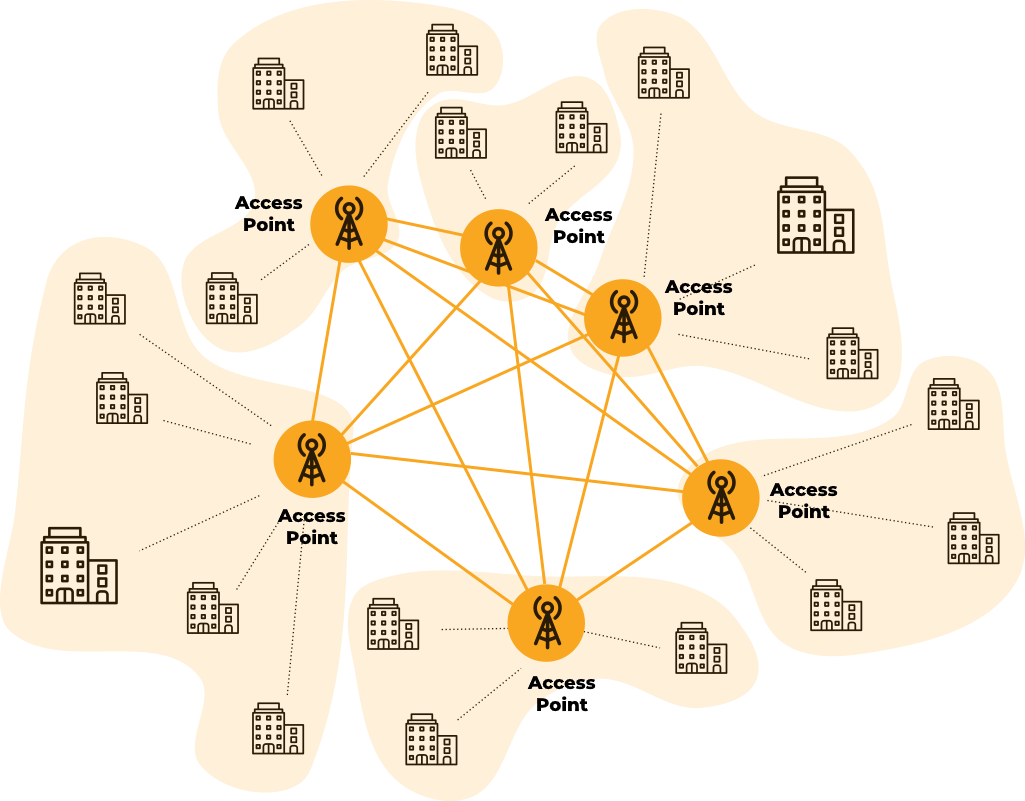
![[1/6] - A Seller (Corner 1) wants to send an invoice to the Buyer (Corner 4), using the Peppol 4-corner network. On the network, Access Points operate SMPs (or use hosted SMP service), and the network features a SML service.](https://www.theinvoicinghub.com/wp-content/uploads/2024/09/SMPSML-1.png)
![[2/6] - The Seller uses his Access Point (Corner 2) to connect to the Peppol network and send the invoice.](https://www.theinvoicinghub.com/wp-content/uploads/2024/09/SMPSML-2.png)
![[3/6] - The Access Point of the Seller queries the SML to retrieve the location of the SMP that contains the Buyer information.](https://www.theinvoicinghub.com/wp-content/uploads/2024/09/SMPSML-3.png)
![[4/6] - The Access Point of the Seller then queries the SMP that contains the Buyer information to figure out which Access Point represents this Buyer.](https://www.theinvoicinghub.com/wp-content/uploads/2024/09/SMPSML-4.png)
![[5/6] - The Access Point of the Seller sends the invoice to the Access Point (Corner 3) of the Buyer.](https://www.theinvoicinghub.com/wp-content/uploads/2024/09/SMPSML-5.png)
![[6/6] - The Access Point of the Buyer receives the invoice and transmits it to the final recipient: the Buyer.](https://www.theinvoicinghub.com/wp-content/uploads/2024/09/SMPSML-6.png)
